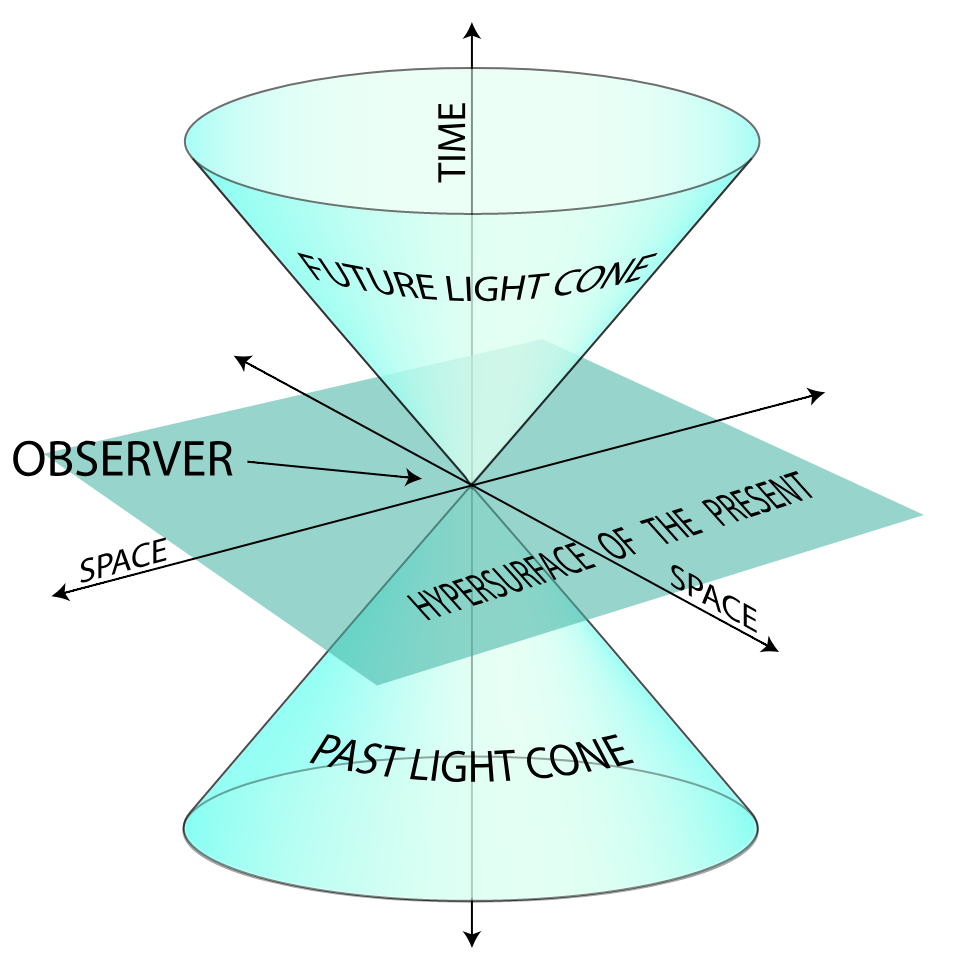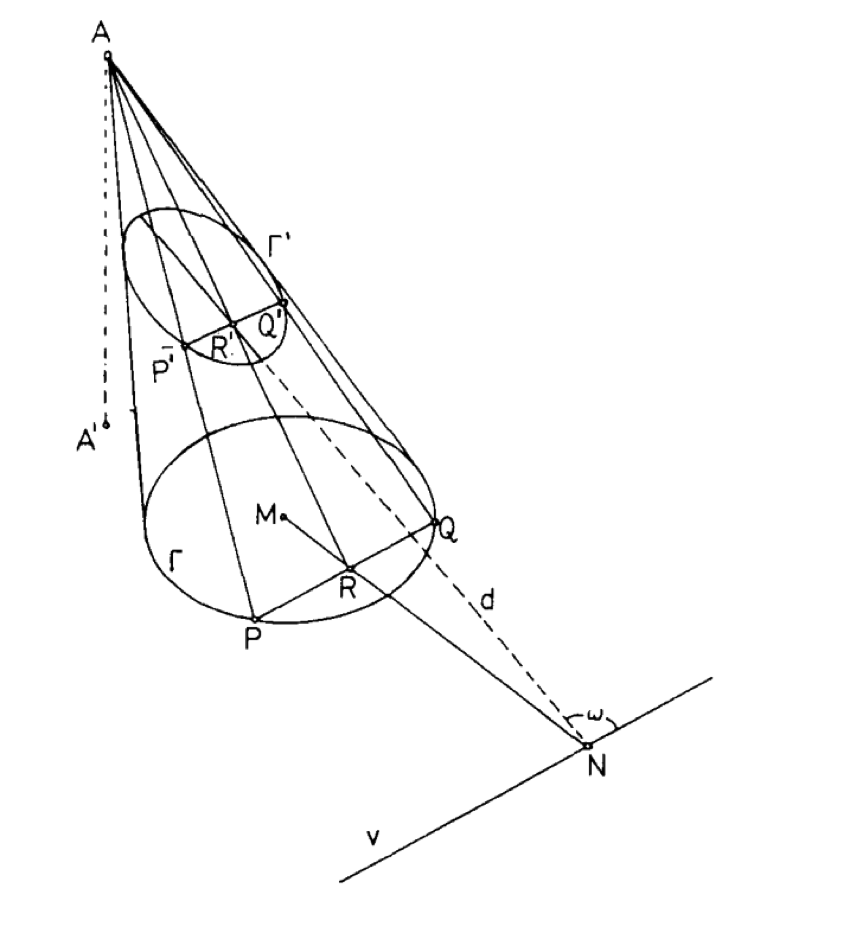A DELEUZIAN BLOB: ENGINEERING VENTRILOQUIST GEOMETRY

Episode 2: INTUITION from TOP-VIEW Keywords: Perspective, Point of View, Laruelle
I make, remake and unmake my concepts along a moving horizon, from an always decentered centre, from an always displaced periphery which repeats and differentiates them. (Deleuze 1994, xxi)
Philosophy is fundamentally a theatre that denies itself as such, that cannot recognize itself as final duplicity, as a tragedy and a comedy of self repetition. A deus ex machina: the philosopher seems to disappear into philosophy, but in reality projects himself specularly, like a curious god contemplating this game. (Laruelle 2013a, 210)
The first scene we encounter is our default position. A scene devoid of objects, ‘the empty space of pure understanding’ but surrounded by myriad figurative and probabilistic givens. Seducing the designer, engineer or builder (of thought) to fill in the emptiness with abstractions: “We can never represent to ourselves the absence of space, though we can quite well think it as empty of objects” It is a gradual movement of a geometric method toward the engineering of concepts, the building of worlds. A first beginning, could depart throughout the Platonic universe. The 2nd of the Platonic solids, the element of earth, the cube, we can place in the middle of our world-stage where all planes intersect. Challenging the omnipotence of the digital creator, and affirming the power of the imagination “that in the cube we can already perceive the perfect shape of a woman.” We could substract from the cube until we reach an apex of representation, but it will only give us a theatre of representation: the movement of the concept arrived at a standstill. We will occupy our theatre throughout, but enter from the opposite direction. We start form the infinitesimal and fold and unfold away from finite rectangular sequences to infinity of curves. We are in a theatre, the theatre of geometric method, points playing lines, playing curves, playing surfaces, not executed by the analytic method, nor designated to proof, but to evoke a movement of thought. It is not oppositional or negating the abstract logical method, but it’s emphasised as ritual, as repetition. Or as Deleuze himself describes theatre as “…real movement, and it extracts real movement from all the art it employs. This is what we are told: this movement, this essence and the interiority of movement, is not opposition, not mediation, but repetition.” Repetition is explicitly framed as logically prior to any concept of identity and the Real sister of arithmetic: the first order in the hierarchical conception of mathematical sciences. From arithmetic we can move through analysis, geometry, mechanics to the physical world. Our theatre of philosophy utilises the geometric method as repetition as movement, it explicates the construction of our model, but it will avoid arriving at a standstill, that is: avoid providing a univocal comprehension as representation. Instead, together we guide a concept throughout a continuum of infinite possibilities (the stage) where it acts as a visual performer of the concept that not only evokes reason, but affection, expression and variation as well. Where Kant claimed that arithmetic is a synthetic a priori theory, Deleuze will not speak in those terms, but ascribes arithmetic more in the nature of the abstract concept of iteration. →Repetition and Arithmetic: Kant. Deleuze and Poincare The stage has no equivalent of the camera-eye, Deleuze suggests, with its capacity to reveal inhuman viewpoints, to deterritorialise the eye (and ear) of the spectator. In our space we find both simultaneously, the stage is the empty void awaiting to be filled in, highlighted by our default 4-viewpoint as the windows through which the philosophical gaze extracts. Our point of view is multiple, there’s no singular notion we need to grasp from the concept as it will continuously oscillate and modulate. We can only capture its degree of variation. As it reverberates throughout the Fold, the Point of View is not psychological, but mathematical or geometric, it pre-exists the subject, it’s only approachable by the subject: ‘a kind of cryptographic location’. The subject and object are in a perspectivist relation, where the “transformation of the object refers to a correlative transformation of the subject” and “that a needed relation exists between variation and point of view”. There are as many points of view as there are inflections in inflection, a line inflects not from point to point, but from fold to fold Deleuze suggests. The point of view holds an ontological position and without it a truth cannot be proven. It is the condition for the manifestation of reality and it naturally comprises a need to find the optimal point of view. If we deconstruct point-of-view we first define the point. In Euclid’s case, his first foundation defines the point as “that which that has no part”, the One, but also as the centre of the circle. This is the point within a Platonic universe, that of a pre-determined order. But our concept oscillates within a Newtonian universe of interaction and perpetual motion – we will perturb the Einsteinian Universe of infinite spatio-temporal curvature later – that lost its notion of a centre, hence the point of view is replacing the missing centre. The best or ultimate point of view, the apex, can only be determined by procedure – and only be positioned by intuition according Kant. Deleuze deconstructs Desargues’ projective geometry and the apex in Apollonius’ conic sections as a finite position in touch with an infinite direction, it only provides a portion of an infinite of series, alternating a finite position with an infinite of possibilities – a finite point, an infinite straight line, a finite circle, an infinite parabola, a finite ellipse, an infinite hyperbola.
In Difference and Repetition Deleuze continues this finite-infinite rhythm to the concept of a subject, which contains an infinite series of predicates and expresses the infinites series of states of the world. Each particular subject in fact expresses a small finite portion of it from a certain point of view – which is in its most basic form is a parameter of the concept. But does philosophy has the exclusive right to the apex, or point of view? And if we entangle to the concept exclusively philosophical is there an outside point of view possible? We would indeed inflect, as Deleuze does in The Fold, with the curve in local orientation, making it impossible as in geometry, to obtain any knowledge of a curve’s global shape. But how do we obtain an extra-philosophical view to see what conditions the curve, and what does remain of the concept in the subject when it exits philosophy? It is difficult to determine exactly when or where we exit philosophy and who exits philosophy. Is it the philosopher that rather imposturous allures his crowd, as a magician that leaves the stage through a hole? Or is it the crowd itself that accepts this fooling as a necessity of the act for epistemological arousal? The fooling that is tantamount to the confusion that emerges when art and philosophy properly meet in proximity of the concept. Arguably successful or not, Francois Laruelle performs such an act when he probes an exit from philosophy through a scientific top-view of philosophy as matter. Most effectively performed by a point-of-exteriority. It occurred to Einstein that there was no underlying viewpoint, from which such different events could be described. Einstein became very aware of the fundamental importance of reference systems. These are either at rest, in constant motion or in acceleration with respect to each other. [Weinert 2005] But what is outside of philosophy, or where do we go when we exit philosophy? Into the real, or to another philosophy Laruelle asks ignorantly? Laruelle seeks a generalized or scientific practice of philosophy, that is non-philosophy, but admitting there’s no absolute exterior point for philosophy but a relatively point of reference – this statement of Laruelle will be paramount to our folding of Einstein’s ‘inertial frame of reference’ later on. The top-view is a lookout of a possible world, a “possible frightening world.” But what about art? If non-philosophy imposes a scientific practice/ putting a scientific order on philosophy but renounces “any interventions into the effective structures of philosophy, it leaves-be philosophy and produces new effects with this material only beyond its “sufficient” validity and usage.” Art is capable of the same! Art as a special effect of Philosophy.